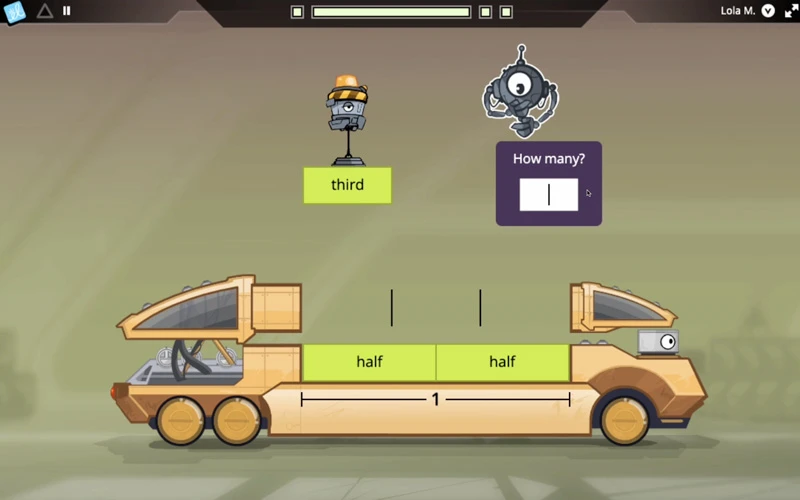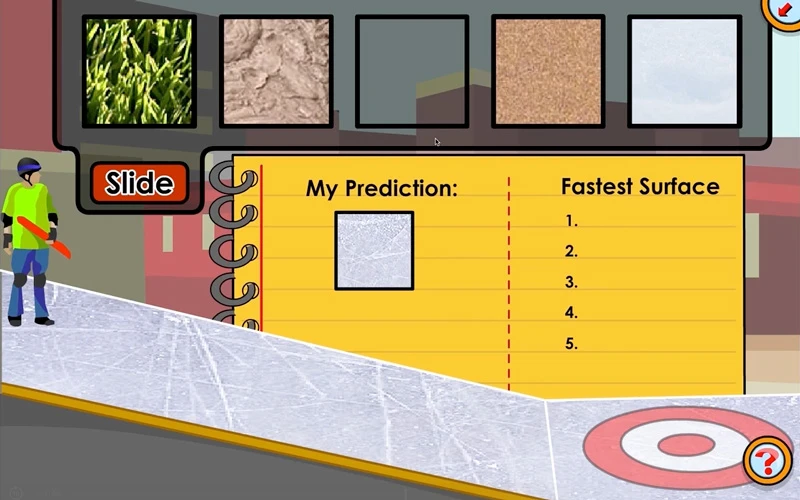Celebrating Women in Science, Engineering and Mathematics
Throughout our history, women have made contributions to science, technology, engineering, and math (STEM) that have changed the world. Discover these trail-blazing women and celebrate their accomplishments with engaging STEM activities!
Dive into discovery with hands-on exploration
Help your students discover how female mathematicians, scientists, and engineers shaped our world. From groundbreaking inventions to space exploration, these pioneers’ contributions continue to inspire future generations to dream big and achieve more. Using hands-on ExploreLearning Gizmos, students can explore concepts and discoveries that wouldn’t exist without these influential leaders. Learn more below!

Nettie Stevens (1905)
Nettie Stevens was an American biologist and geneticist who transformed how we study embryos and cytogenetics today. In 1905, Stevens discovered that sex is determined by a particular configuration of ‘X’ and ‘Y’ chromosomes. Her work proved that sex is genetically determined and not influenced by external conditions, as previously believed. Students can make their own discoveries in human chromosomes with Gizmos!
Photo credit: https://broadsyoushouldknow.com/nettie-stevens/
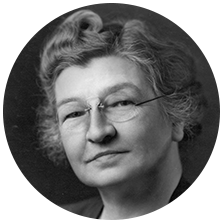
Edith Clarke (1919)
Edith Clarke broke down barriers for women in the field of engineering! Clarke is known as the first female American engineer, and in 1919, she became the first woman to earn a Master’s degree in Electrical Engineering from M.I.T. In addition to these accomplishments, Clarke invented the “Clarke Calculator,” a graphical calculator that simplifies calculations for power transmission line problems, making electrical grid design more efficient. Students can build their own circuits with Gizmos.
Photo credit: https://interestingengineering.com/edith-clarke-the-first-female-electrical-engineer-and-professor-of-electrical-engineering

Gerty Cori (1947)
Gerty Cori was a groundbreaking biochemist best known for her work on carbohydrate metabolism. Her achievements include discovering the “Cori Cycle,” which explains how lactic acid produced in muscles during exercise is converted back into glucose in the liver. Cori’s work on the “Cori Cycle” helps us better understand diabetes and led her to win a Nobel Prize in Physiology or Medicine in 1947. Students can help their own patient suffering from diabetes with the Homeostasis STEM Case from Gizmos.
Photo credit: https://cfmedicine.nlm.nih.gov/physicians/biography_69.html

Barbara McClintock (1983)
Barbara McClintock is a scientist and cytogeneticist who is considered a pioneer in corn genetics. Her maize breeding experiments led her to discover mobile genetic elements or “jumping genes,” which won her the Nobel Prize for Physiology or Medicine in 1983. McClintock’s work left a significant impact on how we understand genetics and inheritance. Students can genetically engineer their own corn with Gizmos.
Photo credit: https://www.britannica.com/biography/Barbara-McClintock
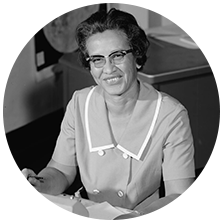
Katherine Johnson (1961)
A space scientist and mathematician, Katherine Johnson is a leading figure in American space history and has made enormous contributions to America’s aeronautics and space programs through her incorporation of computing tools. In 1961, Johnson made history by calculating the trajectory for America’s first trip to space. Learn more about her specialty, geometry, with Gizmos!
Photo credit: https://www.nasa.gov/audience/forstudents/k-4/stories/nasa-knows/who-was-katherine-johnson-k4
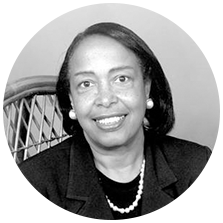
Patricia Bath (1981)
Patricia Bath is an innovator and ophthalmologist who invented the Laserphaco Probe in 1981, a tool that uses lasers to remove painful cataracts. Patricia is credited with revolutionizing cataract surgery, making it accessible for millions of people worldwide to restore their sight. Students can learn more about eyes and vision with Gizmos!
Photo credit: https://en.wikipedia.org/wiki/Patricia_Bath
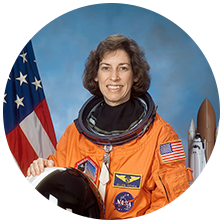
Ellen Ochoa (1993)
In 1993, Ellen Ochoa became the first Hispanic woman to go to space when she served on a nine-day mission aboard the Space Shuttle Discovery. Ochoa also served as the first Hispanic director and second female director of the Johnson Space Center. Make more space discoveries with Gizmos!
Photo credit: https://en.wikipedia.org/wiki/Ellen_Ochoa#/media/File:Ellen_Ochoa.jpg
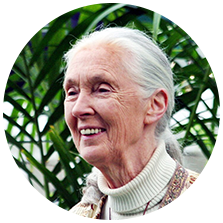
Jane Goodall (2002)
Considered the world's foremost expert on chimpanzees, Jane Goodall spent 60 years studying the social and family interactions of wild chimpanzees. She first went to Gombe Stream National Park in Tanzania in 1960, where she witnessed human-like behaviors among chimpanzees. Goodall is the founder of the Jane Goodall Institute and was named a UN Messenger of Peace in 2002. Study animal behavior with this STEM Case from Gizmos.
Animal Group Behavior STEM Case
Photo credit: https://commons.wikimedia.org/wiki/File:Jane_ Goodall_GM.JPG#/media/File:Jane_Goodall_GM.JPG
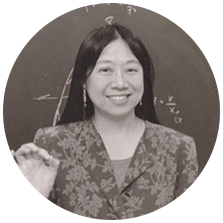
Sau Lan Wu (2012)
Sau Lan Wu played a key role in the discovery of the Higgs Boson in 2012, a fundamental particle that gives mass to other particles. Her discoveries made a significant impact on the world of particle physics. Wu continues to lead ground-breaking research on what makes up the universe, serving as a visiting scientist at CERN and Professor of Physics at the University of Wisconsin-Madison. Explore the field of physics with Gizmos!
Photo credit: https://quanthep-seminar.org/speaker/sau-lan-wu/

Tu Youyou (2015)
Tu Youyou is a Chinese malariologist and pharmaceutical chemist who revolutionized malaria treatment with her discovery of artemisinin, a powerful antimalarial compound. Her groundbreaking research has saved millions of lives in regions heavily affected by malaria. In 2015, she was awarded the Nobel Prize in Physiology or Medicine for her transformative contributions. Discover health science with Gizmos!
Photo credit: https://www.nobelprize.org/prizes/medicine/2015/tu/facts/
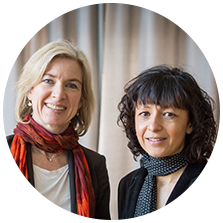
Jennifer Doudna and Emmanuelle Charpentier (2020)
Jennifer and Emmanuelle were the first women to win the Nobel Prize in Chemistry, sharing the prize in 2020 for their development of a tool that helps researchers change the DNA of animals, plants, and microorganisms with extremely high precision, which can help eliminate diseases, create hardier plants, and wipe out pathogens. Discover genetic changes in meiosis with Gizmos.
Photo credit: https://www.nature.com/articles/d41586-020-02765-9
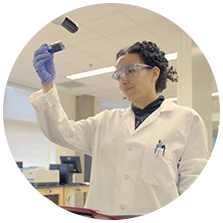
Raychelle Burks (2020)
Raychelle Burks is an Associate Professor of analytical chemistry at American University in Washington, D.C. She developed an interest in forensic science at the age of 12, and her current research centers on developing ways to detect chemicals found in explosives and illicit drugs. In 2020, the American Chemical Society awarded Burks the Grady-Stack Award for her public engagement work. Learn more about forensic science with Gizmos!
Photo credit: https://interactive.wttw.com/playlist/2021/04/13/diversity-in-stem
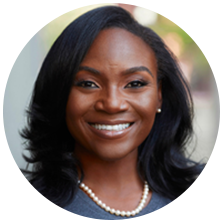
Kizzmekia Corbett (2020)
Kizzmekia Corbett is an American viral immunologist and an assistant professor of Immunology and Infectious Diseases at Harvard. Prior to joining Harvard, she was a senior research fellow at the Vaccine Research Center at the National Institute of Allergy and Infectious Diseases. Appointed to the VRC in 2014, Corbett played an integral role in the development of the COVID-19 vaccine. Learn more about how viruses can spread with Gizmos.
Photo credit: https://www.hsph.harvard.edu/profile/kizzmekia-s-corbett/
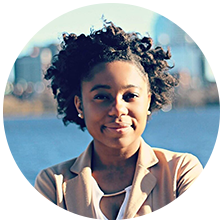
Tiera Guinn Fletcher (2022)
At age 11, Tierra Guinn Fletcher decided to become a rocket scientist. While in college, Fletcher was an intern at Boeing and is now one of the designers and structural analysts building the Space Launch System for NASA, which is set to send people to Mars. Fletcher currently works as a project engineer at Boeing. Students can program their own space rover with Gizmos.
Photo credit: https://en.wikipedia.org/wiki/Tiera_Guinn_Fletcher#/media/File:Tiera_Fletcher_Guinn.jpg
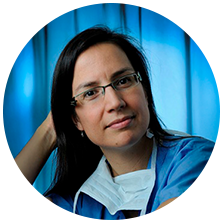
Nadine Caron (2024)
Dr. Nadine Caron is the first Canadian female general surgeon of First Nations descent and an Associate Professor in the Department of Surgery at the University of British Columbia. In 2024, Dr. Caron was inducted into the Canadian Medical Hall of Fame due to her leadership highlighting and improving the needs of Indigenous Canadians. Students can learn how to use scalpels, forceps, and other surgical instruments with Gizmos.
Photo credit: https://www.thecanadianencyclopedia.ca/en/article/nadine-caron
With Gizmos, Kids Get It.
Powerful math and science simulations that build inquiry and excitement for grades 3-12.
What are Gizmos?
Over 550 math and science Gizmos give everyone something to graph, measure, and compare. Even predict and prove. That's hundreds of opportunities where students don't just act like scientists and mathematicians. They are.
Why Gizmos Work
Meta-analysis of educational research identifies several instructional techniques that have a strong positive impact on student achievement. Math and science Gizmos bring these powerful and effective instructional techniques to the classroom.
Professional Development
We want you to achieve great things in the classroom. That's why every Gizmo comes equipped with on-demand professional development, personalized support for educators, and customizable teacher resources such as lesson plans, guides, and much more!


